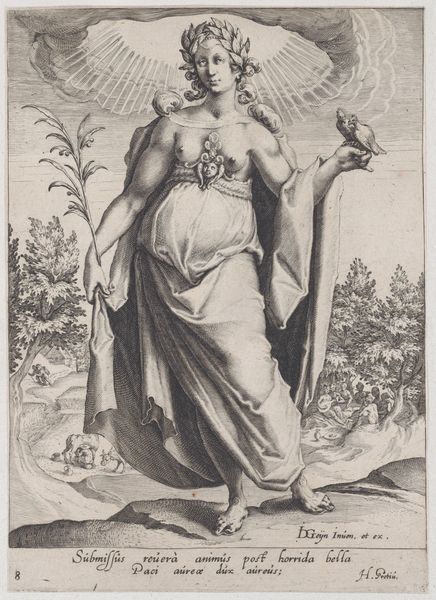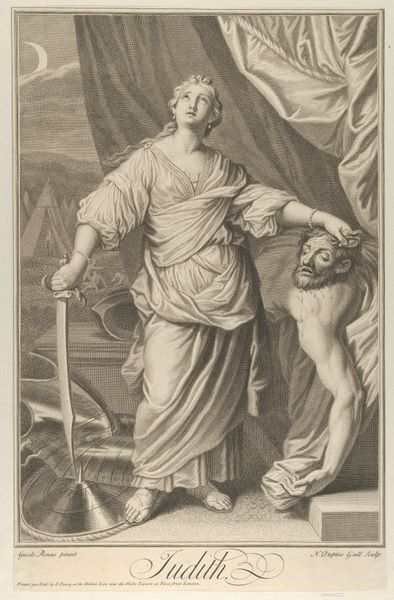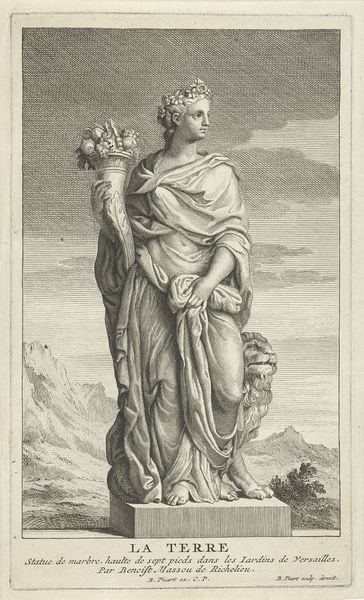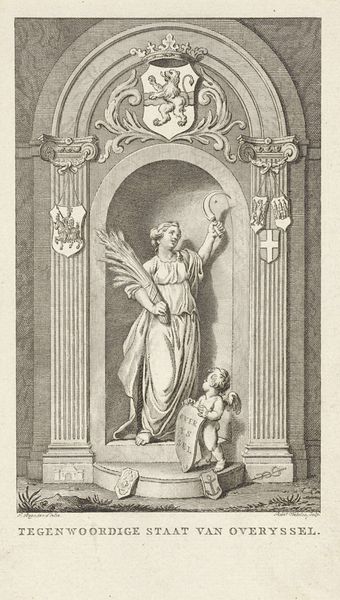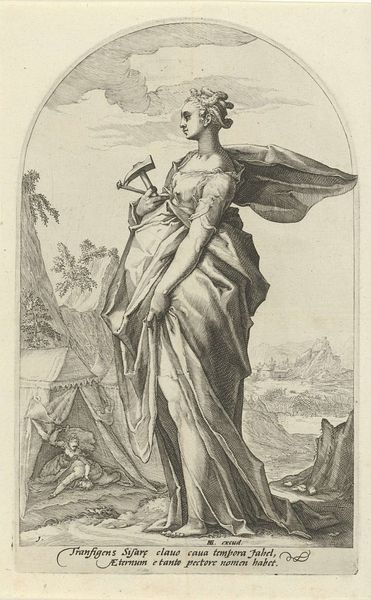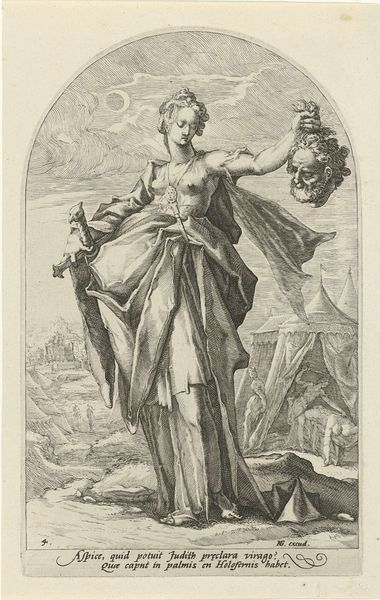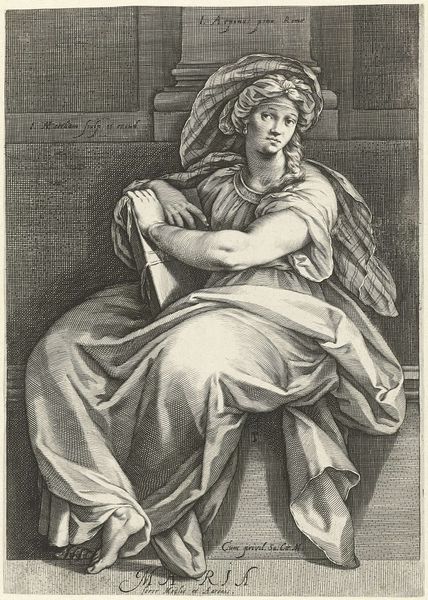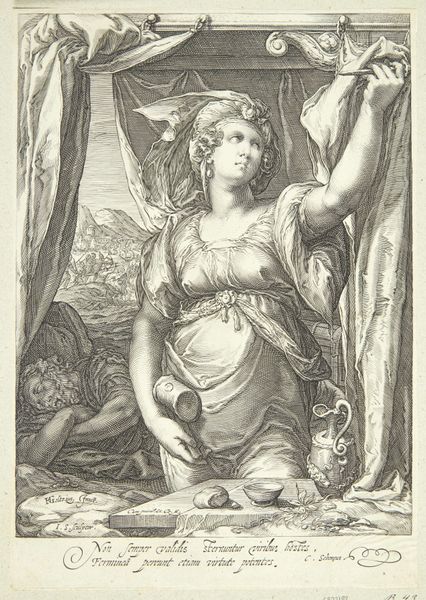
engraving
#
portrait
#
allegory
#
baroque
#
engraving
Dimensions: height 372 mm, width 244 mm
Copyright: Rijks Museum: Open Domain
Editor: Here we have Theodor Matham's "H. Agatha," an engraving from somewhere between 1615 and 1676, currently housed at the Rijksmuseum. The texture created through engraving feels particularly important to the image's dramatic presentation. What jumps out to you about this piece? Curator: What interests me most is Matham's use of engraving itself as a means to elevate this image beyond a simple devotional object. Engraving, in this period, demanded a highly skilled artisan – it wasn't just about reproduction, but about establishing value through labor and material process. Look closely, and consider the deliberate act of mark-making. What kind of societal role might such skill fulfill? Editor: I guess I hadn't thought about the status that came with engraving... So, seeing it as valuable because of how much work it took to make? Curator: Exactly. Think about the dichotomy present: the spiritual allegory contrasted with the very earthly, physical process required to create it. How does the materiality of the engraving – the paper, the ink, the pressure of the plate – shape our understanding of Saint Agatha’s story and her iconic symbols like the breasts she carries on the plate? How did this production alter how one relates to those symbolic objects or that saint's cultural function? Editor: That tension is interesting! I can see now that focusing on the labor and the process opens up the artwork. Now, it feels much less removed from the society it was created in. Curator: Precisely! By grounding our analysis in material and method, we resist passively accepting the "divine" image and instead actively question its cultural construction. Editor: This makes me reconsider my previous assumptions. I had seen the religious theme as quite separate from the craft, but actually they are really interconnected! Curator: Indeed!
Comments
No comments
Be the first to comment and join the conversation on the ultimate creative platform.

